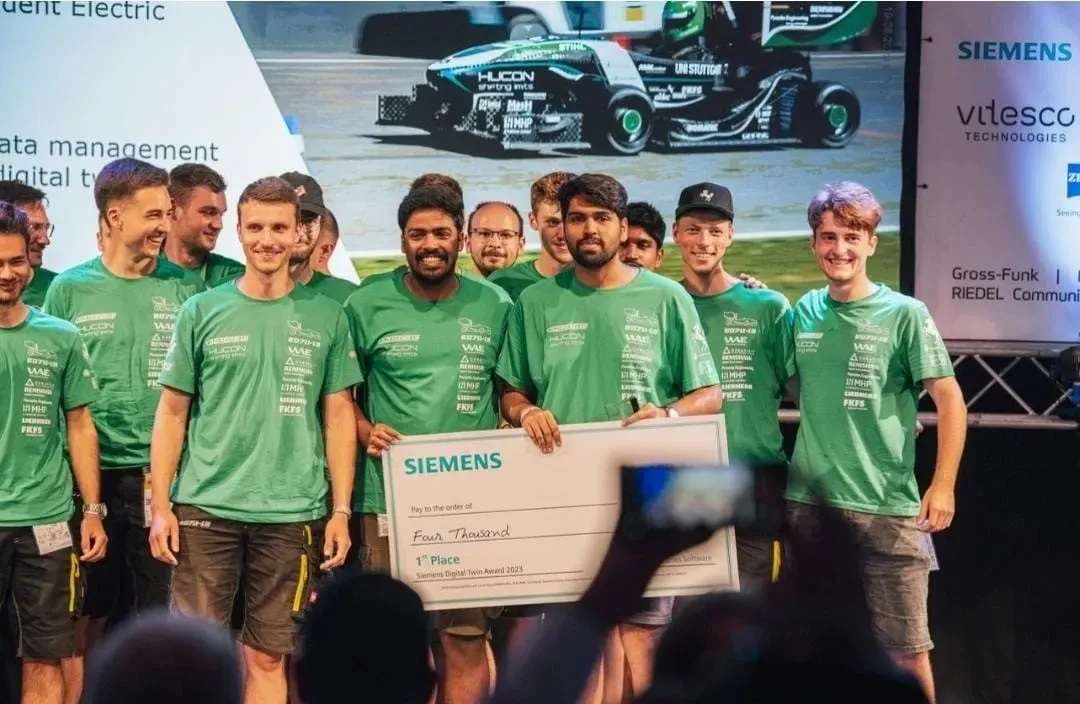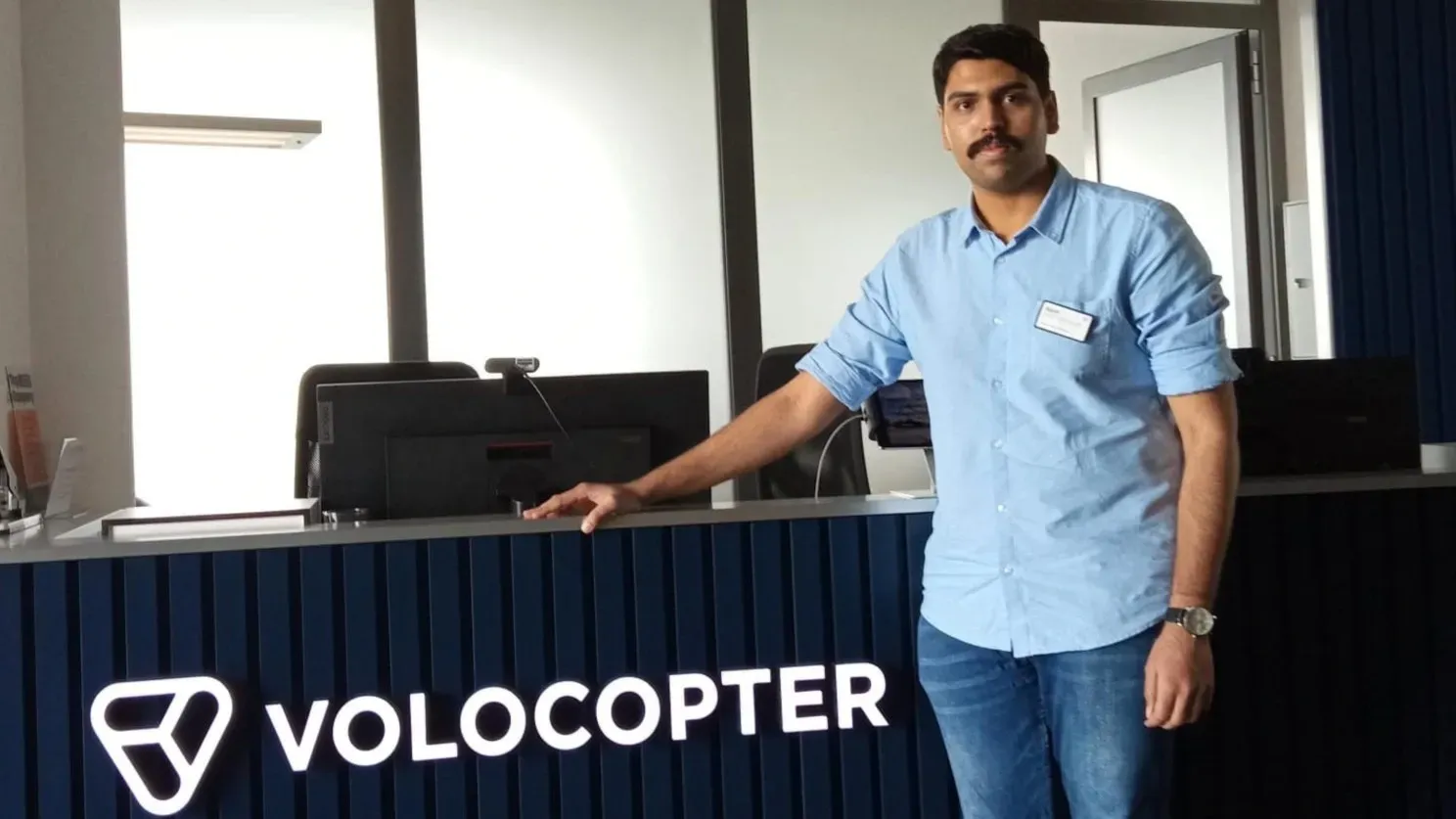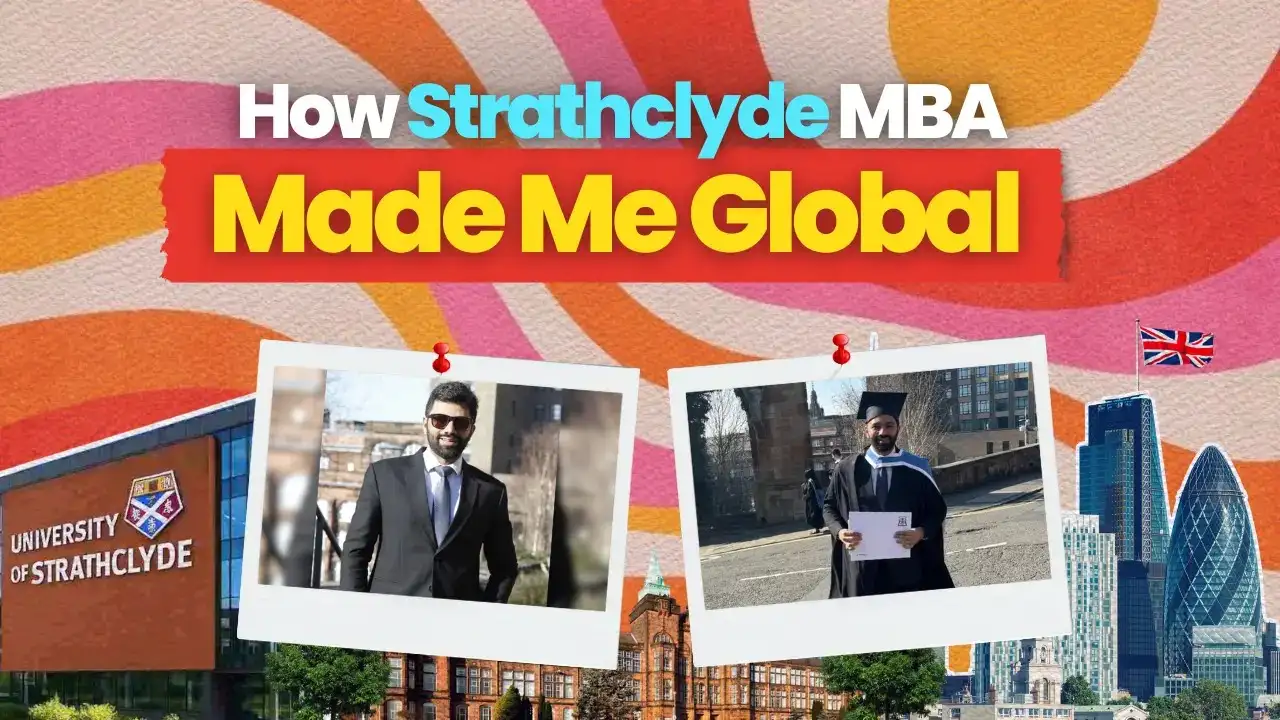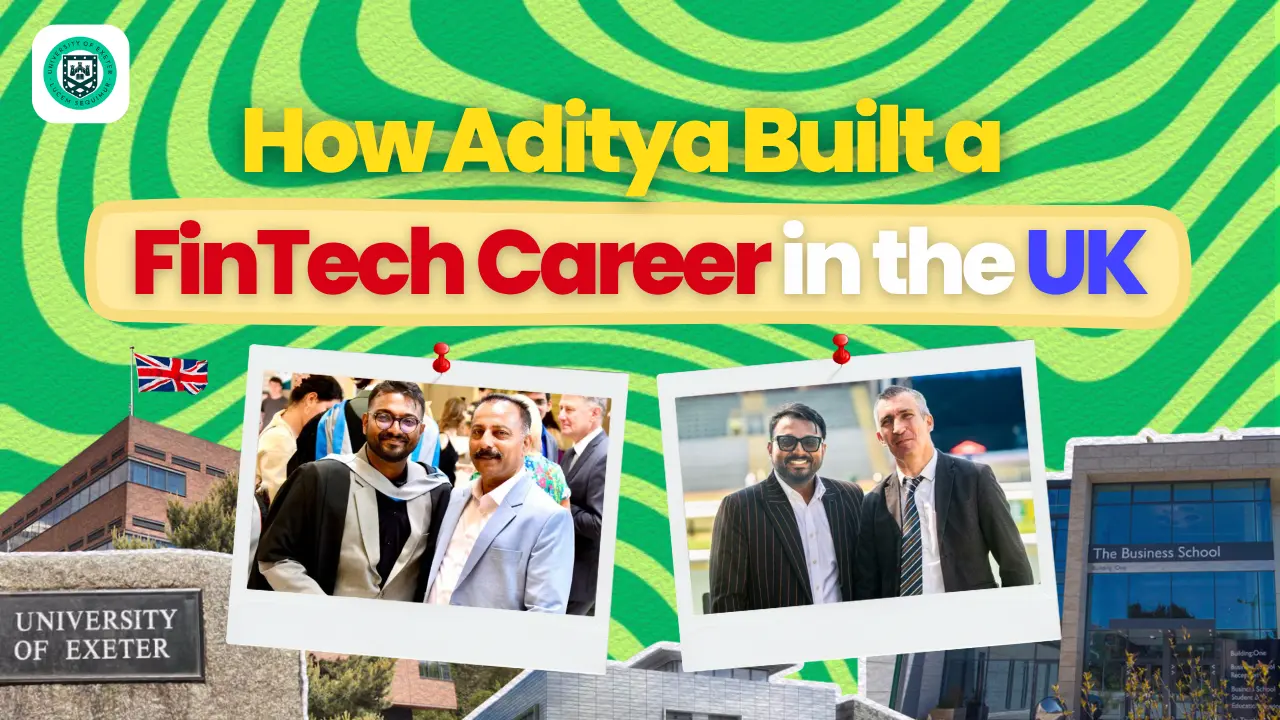Student Reviews
AI, Mechanical Engineering, and Germany’s Auto Cradle: Ram Seetharaman’s Career Journey

Ram Seetharaman is the Head of AI & Product Manager at Synera in Germany, where he is building a 0–1 product with Agents. Ram completed his Master of Science in Computational Mechanics of Materials and Structures at the University of Stuttgart and holds a Bachelor of Engineering in Mechanical Engineering from Anna University.
Leap sat down with Ram for an interview session, discussing his journey from mechanical engineering to product management in AI, and his experience building enterprise-focused AI solutions in Europe.
Q. Tell us about your background
I originally come from Chennai. During my undergraduate years, I was part of a team that built off-road racing vehicles. That experience exposed me to the world of computational simulations, and I quickly realized this was an area I wanted to dedicate myself to. That interest led me to apply for master’s programs in Germany. The program, Computational Mechanics of Materials and Structures, was still rooted in mechanical engineering but with a strong interface with programming, algorithms, and computational methods.
Even during my bachelor’s, I had been exploring artificial intelligence, which was then mostly called machine learning, before AI became the phenomenon it is today. At Stuttgart, I was able to dive deeper into advanced topics like deep learning and physics-informed neural networks, blending cutting-edge AI with applied mechanics. Alongside academics, I gained practical exposure by working with Formula Student teams and at Volocopter, where I contributed to developing eVTOLs. These experiences gave me the best of both worlds: strong theoretical foundations and real-world, hands-on applications.
Q. Can you tell us about Synera and your role there?
Synera is a process automation platform for engineers. Our mission is to enable engineers to build workflows and automate repetitive tasks, freeing them up to focus on innovation. I currently lead our AI efforts while also working as a product manager, and I’ve been with the company for nearly two and a half years now. It’s been an exciting journey, bringing together my background in mechanical engineering, AI, and product-building to help shape the future of engineering automation.
My role involves speaking with users and customers almost every day, understanding not just their individual goals but also the larger objectives of their organizations. A product manager’s job is to bridge that understanding with the internal R&D and stakeholder teams, ensuring we deliver a product that truly creates value and succeeds in the market.

Winning the Siemens Digital Twin Award at Formula Student
Q. When you first started working on machine learning in your undergrad, did you imagine AI would grow into the world-changing technology it is today?
During my undergrad, I was mainly looking at what was valuable at the time; the buzz was all about data analysis and data science. I explored why these roles were coveted, and that’s how I first became interested in machine learning. My focus was on figuring out how I could apply it within mechanical engineering.
Around the same time, interesting advances were happening in natural language processing, so it was not large language models yet, but earlier forms of NLP. It was clear the field was growing quickly, but I never imagined something like ChatGPT would emerge and create such a phenomenal shift in technology. Even today, the pace of evolution in AI continues to surprise me.
Q. You mentioned working with Formula Student teams, which sounds interesting. Can you tell us about your work there?
I was part of Formula Student, a global competition where university teams design and build race cars. In Stuttgart, I joined one of the top team called GreenTeam. I had two main responsibilities: first, optimizing the vehicle by reducing its mass, and second, exploring how AI could support us through digital twins.
To explain simply, a digital twin is a digital representation of a physical system, like how a weather app gives you real-time insights about the atmosphere without replicating it physically. In industries, this is used for complex or risky assets, like heavy machinery or furnaces. For us, it meant creating digital models of our race cars so we could monitor risk, predict failures, and optimize performance at high speeds.
I worked on several machine learning models for these predictive tasks and automation workflows, ironically, using Synera, the same platform I’d later join as a professional. Over my two years on the team, we became world champions in multiple categories, including digital twin innovation, which I was directly responsible for. It was a formative experience, blending engineering, AI, and racing.

Q Why did you choose Germany and the University of Stuttgart?
For me, moving abroad was appealing because research alone isn’t enough; it needs to be applied somewhere. Coming from a mechanical engineering background, Germany was a natural choice. It has always been at the forefront of advances in engineering, especially in the automotive industry. Stuttgart, in fact, is often called the cradle of the automobile, with companies like Porsche, Daimler, BMW, and Audi all rooted in southern Germany.
Beyond the strong industry ecosystem, Germany also offers world-class education at a relatively low cost, with many public universities charging only basic expenses.
Q. From your perspective, how is AI transforming the field of mechanical engineering?
While software lives on a screen, mechanical engineering has to function in real-world systems like a BMW or Audi, and hence, the requirements are very different. What AI is doing here is helping at many steps along the workflow. It might not replace the entire process, but it can accelerate critical parts of it. For example, reading a 100-page technical document could take a human engineer hours, while an LLM can process it in seconds. An LLM can recommend which type of aluminum to use in a particular application, drawing from its extensive textbook knowledge. Instead of engineers having to recall all this information, they can focus on validating and approving solutions.
At Synera, we take this further by combining LLMs with engineering tools, enabling automation and workflow orchestration. That means AI becomes not just a knowledge source but also a practical assistant in design and development. I see this as the future: agents with evolving ‘brains’ powered by AI, and constantly improving tools that make them useful for real-world engineering.
Q. What advice would you give to Indian students who want to move to Germany and break into your industry?
My view is that the days of moving abroad just for the sake of living abroad are over. Today, you can have a good quality of life in many places, so the motivation needs to go deeper. I’d say it’s essential to have a long-term vision, perhaps not every detail, but at least a sense of which industry you want to grow in and where that industry thrives.
For me, with a background in mechanical engineering and computational science, Germany was the obvious choice because of its strong industrial ecosystem. If someone is in marketing, they might find their path elsewhere. The key is to think in terms of a 10-year career vision: what kind of role you want to grow into, and then which country is the best place to pursue that. Having that clarity helps you make much better decisions than moving abroad without a plan.



